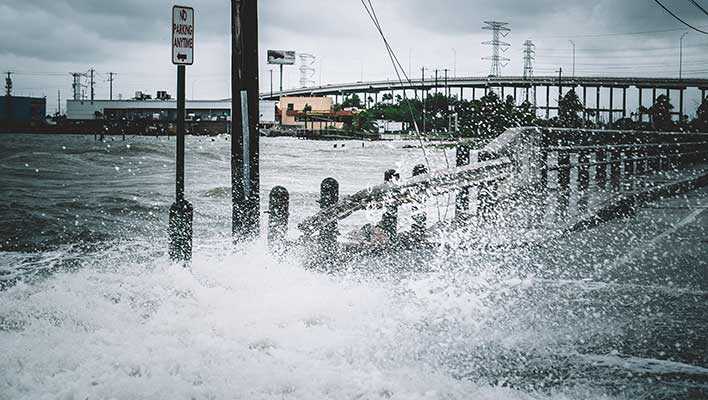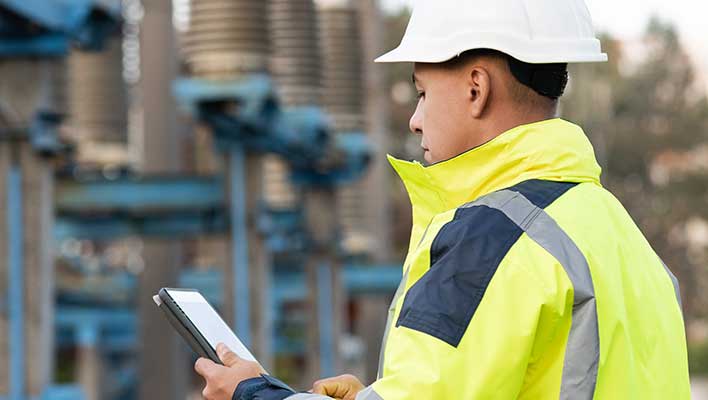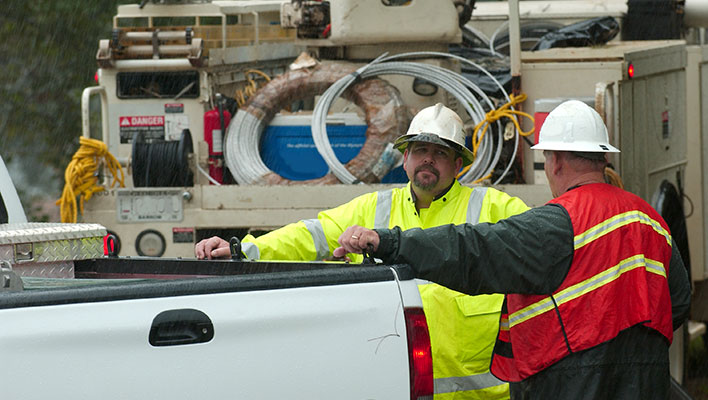“Hurricane Ian created an opportunity for how we might use our automated callout system going forward; Ian was a sizable event, much like [Hurricane] Irma back in 2017,” said Korey Bush, assistant general manager for Customer Service at Florida-based Lakeland Electric. “Since Irma, we’ve had many people move into new roles, they weren’t necessarily familiar with responding to an event the size of Ian.”
Lakeland Electric automated its callout process nearly 20 years ago. For decades, the callout process at the Florida utility has been faster and less costly than hundreds (perhaps thousands) of its peers. Utilities spend millions of dollars on over-time and outside services for restoration. While some utilities see that as the cost of restoration, Lakeland Electric doesn’t. Bush says automating the call out of crews was a chance to stamp out inefficiency. When there’s an after-hours emergency, most utilities phone crews and manually track resources like vehicles, equipment, and callout rosters.
Lakeland Electric automated its after-hours callout process to reach its approximately 380 employees in seconds. The utility’s after-hours field coverage consists of one-man trouble crews. When restoration requires more help, the utility launches an automated callout with a SaaS system from ARCOS LLC, part of the software maker’s workforce management platform – a single pane of glass from which to see utility operations. With a few taps on a keyboard, tablet or smartphone, an operator from Lakeland Electric’s System Control center automatically finds and calls available utility crews, analyzes responses, and reports on the outcome.
Lakeland Electric segregates its crews by type of work and equipment, but the algorithms running the automated callout system easily pick the workers with the right skills for the job. The callout software follows any overtime workplace agreements while making calls. The system notifies employees via text, pager, phone, email, or a mix of all four. Since implementing the automated callout system, the length of callouts has gone from hours to minutes. System Control now automatically launches callouts together and receives multiple responses at once.
Ian’s lesson for Lakeland
After Hurricane Ian, Lakeland Electric began exploring the use of its automated callout system for more than finding available crews and directing them to after-hours emergencies.
“We knew there were untapped capabilities in our callout system for sectionalizing a workgroup and activating them in a scalable way,” remarked Bush. “One way was alerting engineers to take on their storm roles for damage assessment.”
Before Ian, the all-hands communication process at Lakeland Electric required an employee to log into the utility’s phone system and leave an automated message for employees to periodically check. During a major event, employees would have to remember to call the line for updates, sometimes three or four times per day.
“That’s a reactive way of doing business,” said Bush. “Instead, we’ll use our automated callout system to push out evolving information about storms. Once we implement the mass-notification capability, our storm leaders for each group can text, email, or call with hourly status updates or alert a work group to split up to cover different tasks. Restoration evolves, and our communications has to mirror that.”
Lakeland Electric will enable the all-hands calls via ARCOS SIREN Mass Notification, a software product that sits atop the callout software’s architecture and automatically uploads contact lists held by a utility’s other software systems. Since the SIREN capability is part of the automated callout system, Lakeland Electric will track if employees receive a mass notification and accept the assignment attached to the call.
“Any opportunity to eliminate manual procedures and take work off people’s desk is a good thing,” said Bush. “We knew there had to be a better way to communicate when we needed all hands on deck to manage a hurricane, and we’ll be ready to do that when the 2023 hurricane season begins.”
According to Bush, the other facet of Lakeland Electric’s emergency management process rests with the utility’s marketing and public-relations team who will use the new mass-notification feature to inform all employees about the progress of restoration as well as which phase of recovery the utility’s service territory is in.
When asked whether automated callout and SIREN would be applicable for municipal utilities in Tennessee, Bush said Tennessee encounters tornados and other events that cause large outages, so he sees the system as valuable for daily business and as a mass communication tool.
“If you want to improve your processes, automated callout and SIREN give it to you,” Bush remarked. “Our weekend, on-call crews and supervisors use the automated callout mobile app to modify who’s on the call list, make changes on the fly, and trigger a notification about the change. It increases safety, efficiency, and reliability for us.
“When you improve reliability and response for your customers, that adds value,” said Bush. “I challenge you to find a utility that doesn’t want to improve its response.”




